Under the high patronage of
H.S.H. Prince Albert II of Monaco
AMCA
Association Monégasque pour la Connaissance des Arts
2024-2025 season cycle
“Beyond heritage: places of beauty and sharing”
4 conferences from October 2024 to January 2025
At the Théâtre des Variétés 1, Bd Albert Ier 98000 Monaco
and at the Théâtre Princesse Grace 12, av. d’Ostende 98000 Monaco
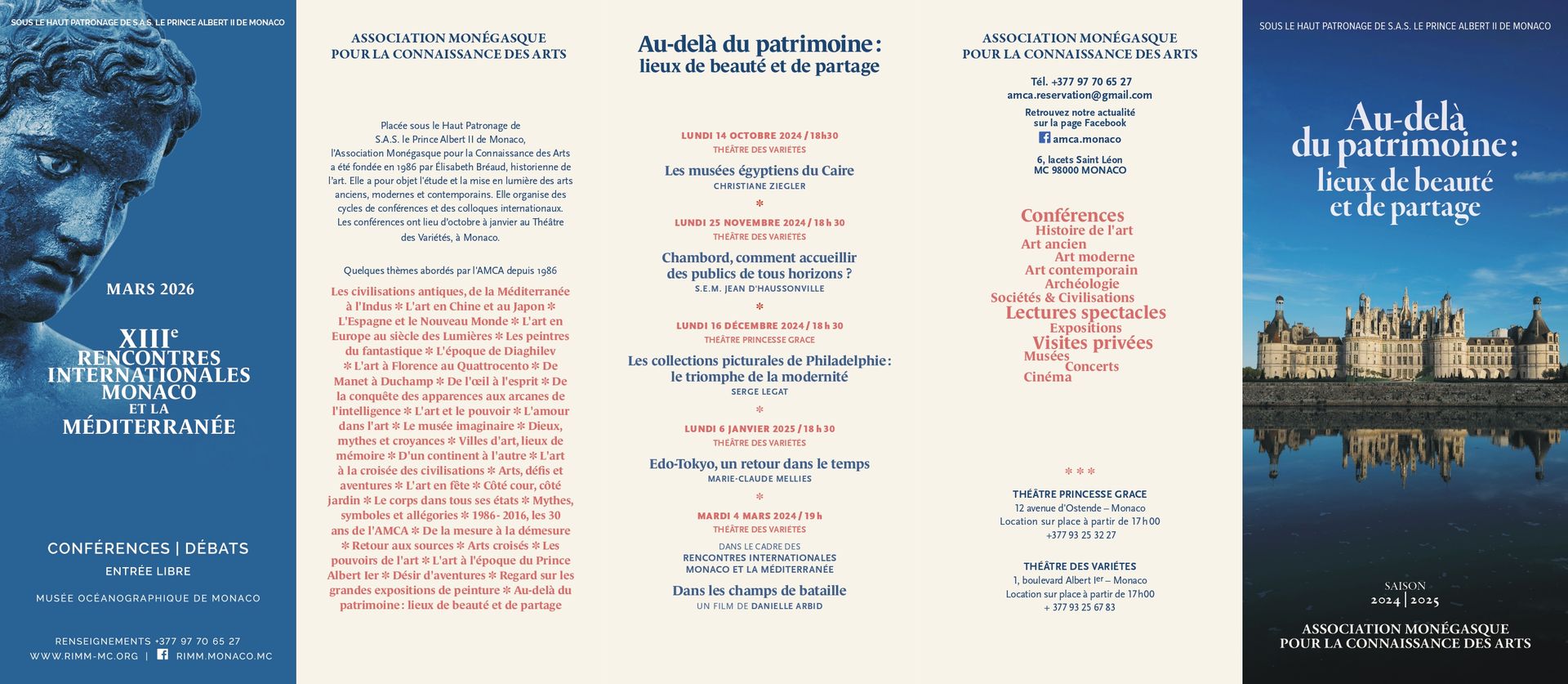
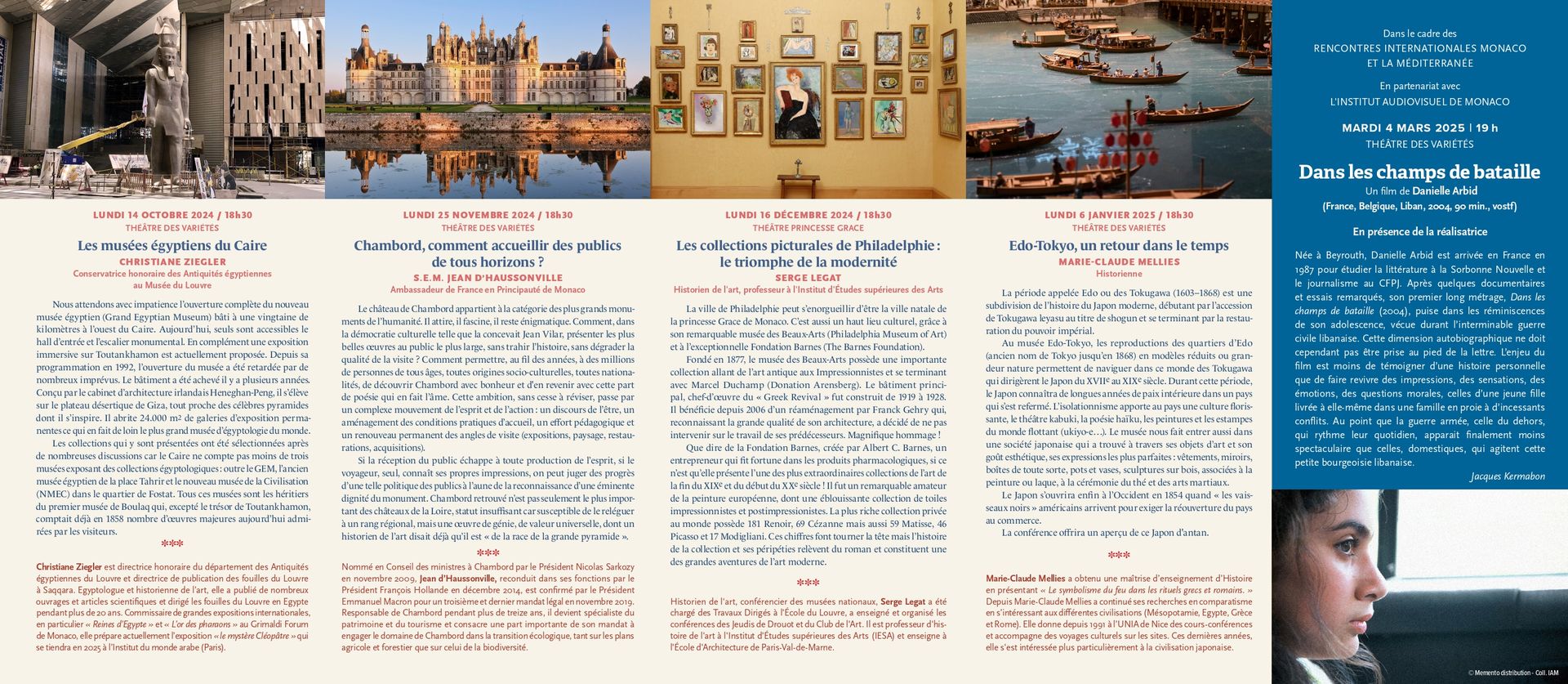
With its new series of conferences entitled “Beyond Heritage: Places of Beauty and Sharing”, the AMCA focuses on exemplary sites located on four continents.
From Cairo to Tokyo, via Philadelphia and Chambord, several museums and a castle will be examined in relation to their architecture and their artistic collections, witnesses of civilizations very different from each other but whose heritage belongs to all. It is on the atmospheres of these unique places and the exceptional works of art they contain, that the speakers will intervene by showing that they are an inexhaustible source of intellectual enrichment and emotions. Finally, in a keen knowledge of the history of these places and a questioning of their future, each of these specialists will speak of the men who worked to create them. Therefore, to capture the spirit of these places to continue to keep it alive and give as many people as possible the chance to appreciate its full value.
As usual, the AMCA will welcome its public on Mondays at 6:30 p.m. at the Théâtre des Variétés in Monaco, as well as at the Théâtre Princesse Grace 12, av. d’Ostende 98000 Monaco for the conference on Monday, December 16, 2024.

MONDAY OCTOBER 14, 2024 at 6:30 p.m.
THÉÂTRE DES VARIÉTÉS
“The Egyptian Museums of Cairo”
CHRISTIANE ZIEGLER
Honorary Curator of Egyptian Antiquities at the Louvre Museum
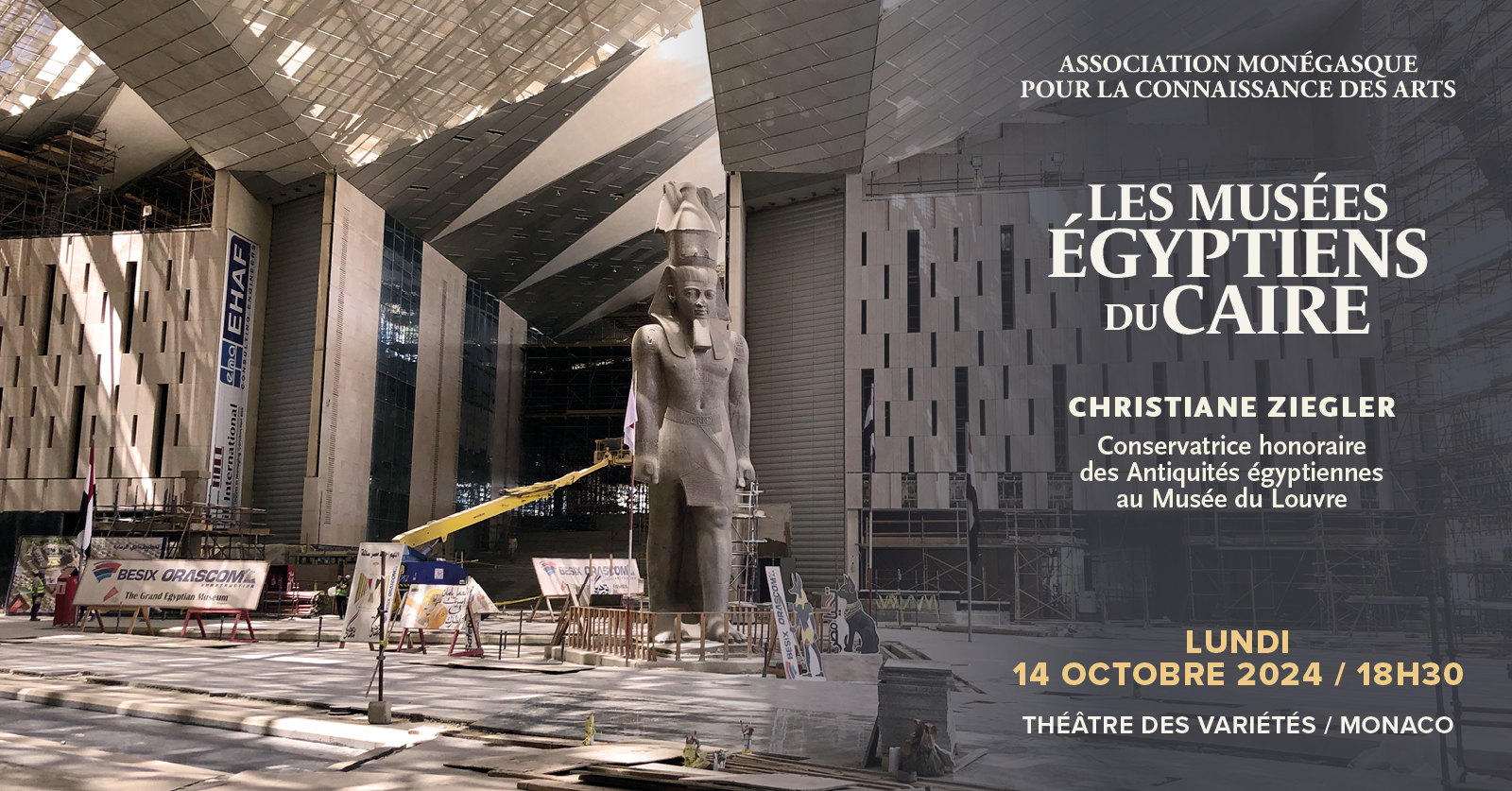
We are eagerly awaiting the full opening of the new Egyptian Museum (Grand Egyptian Museum) built about twenty kilometers west of Cairo. Today, only the entrance hall and the monumental staircase are accessible. In addition, an immersive exhibition on Tutankhamun is currently on offer. Since its programming in 1992, the opening of the museum has been delayed by many unforeseen events. The building was completed several years ago. Designed by the Irish architectural firm Heneghan-Peng, it stands on the desert plateau of Giza very close to the famous pyramids from which it is inspired. It houses 24,000 m2 of permanent exhibition galleries, making it by far the largest Egyptology museum in the world.
The collections presented there were selected after much discussion because Cairo has no fewer than three museums exhibiting Egyptological collections: in addition to the GEM, the Old Egyptian Museum in Tahrir Square and the New Museum of Civilization (NMEC) in the Fustat district. All these museums are the heirs of the first museum of Boulaq which, except for the treasure of Tutankhamun, already had in 1858 many major works admired today by visitors.
Christiane Ziegler is Honorary Director of the Department of Egyptian Antiquities at the Louvre and Director of Publication of the Louvre excavations at Saqqara. An Egyptologist and art historian, she has published numerous scientific works and articles and directed the Louvre excavations in Egypt for more than 20 years. Curator of major international exhibitions, in particular “Queens of Egypt” and “The Gold of the Pharaohs” at the Grimaldi Forum in Monaco, she is currently preparing the exhibition “The Mystery of Cleopatra” which will take place in 2025 at the Institut du monde arabe (Paris).
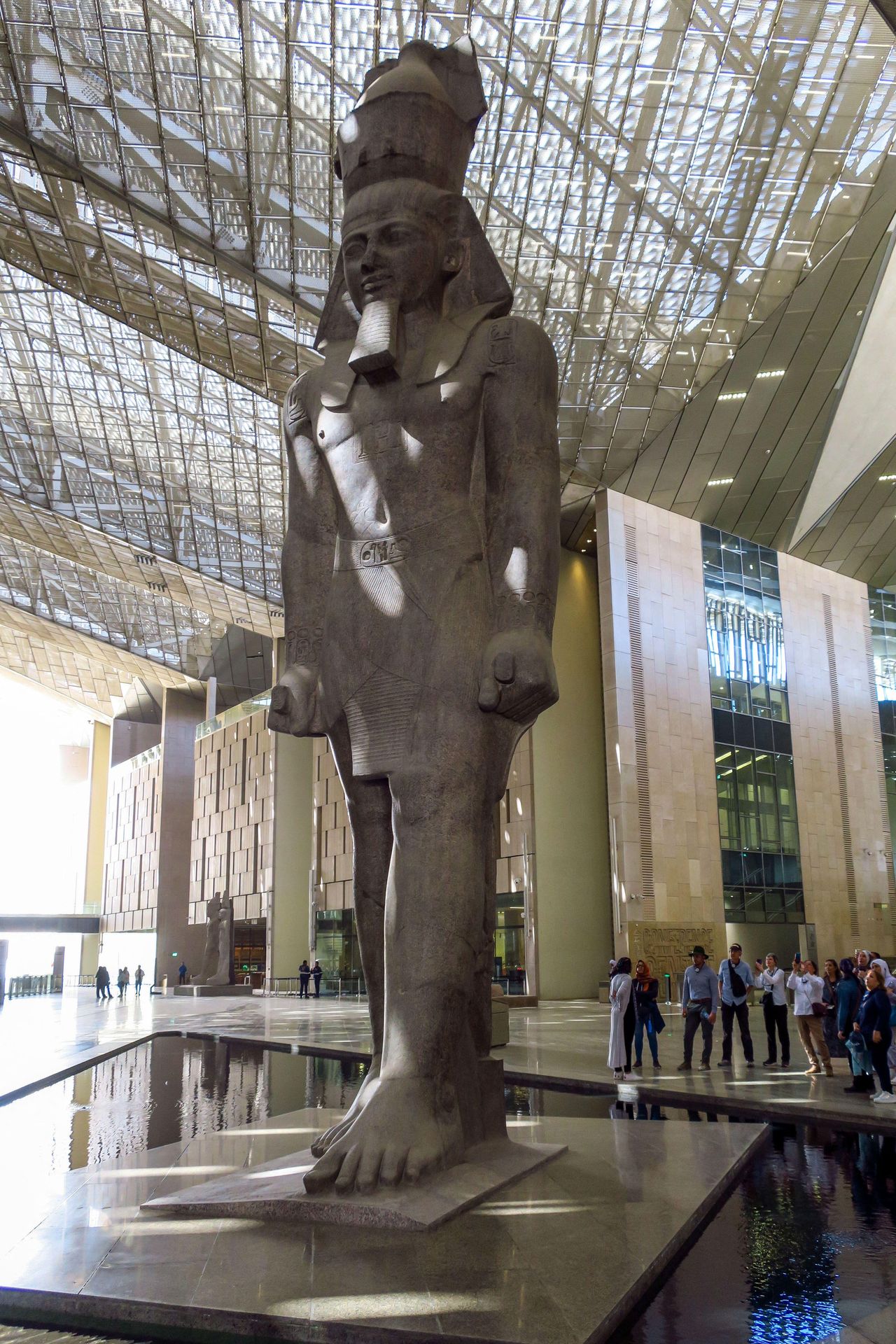
MONDAY NOVEMBER 25, 2024 at 6:30 p.m.
THÉÂTRE DES VARIÉTÉS
“Chambord, how to welcome audiences from all backgrounds?»
H.E.M. JEAN D’HAUSSONVILLE
Ambassador of France to Monaco
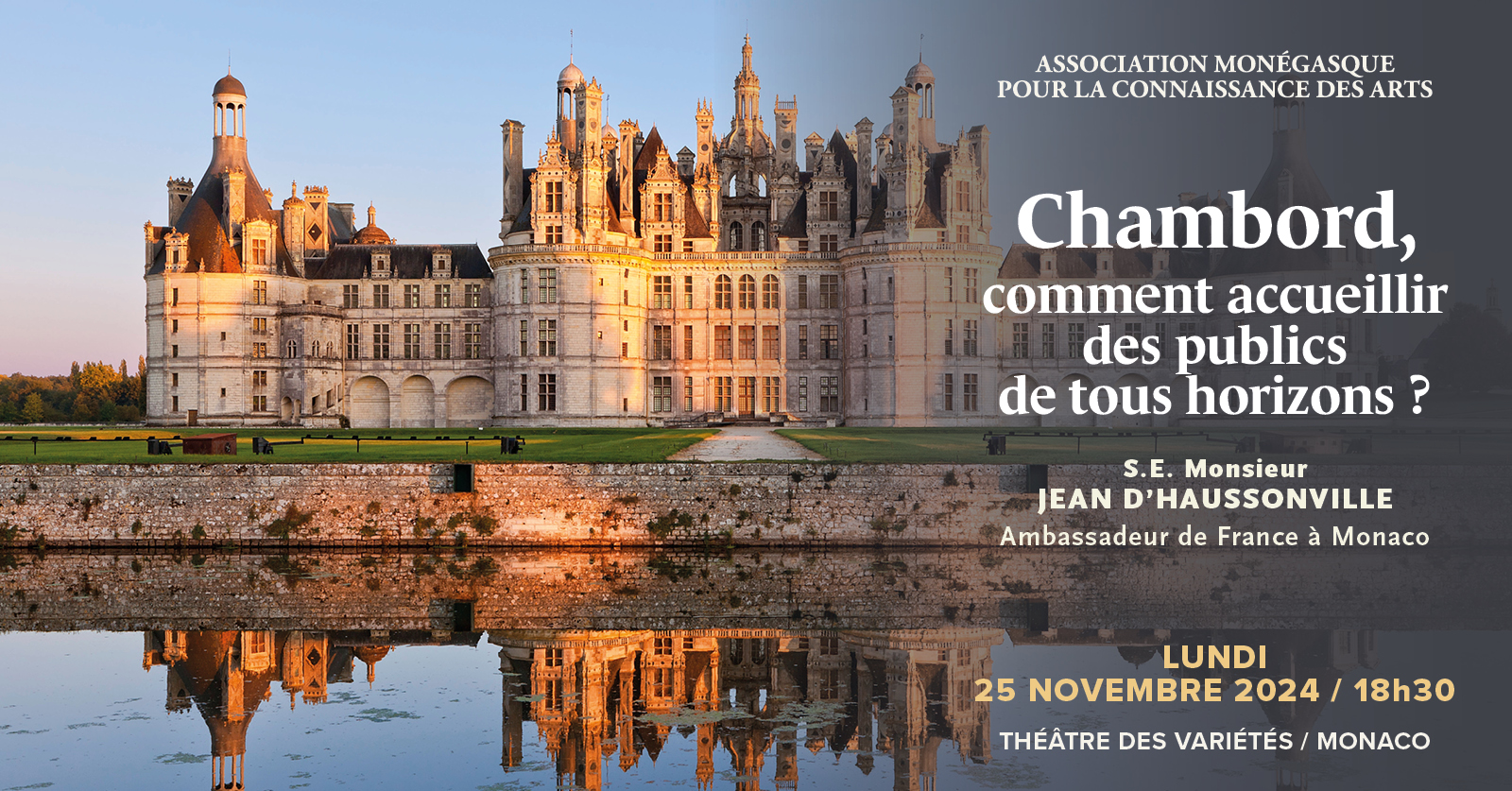
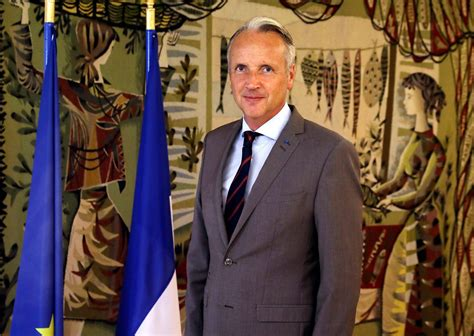
S.E.M. JEAN D’HAUSSONVILLE
The Château de Chambord belongs to the category of the greatest monuments of humanity. It attracts, it fascinates, it remains enigmatic. How, in the cultural democracy as conceived by Jean Vilar, can we present the most beautiful works to the widest possible audience, without betraying history, without degrading the quality of the visit? How can we allow, over the years, millions of people of all ages, all socio-cultural origins, all nationalities, to discover Chambord with happiness and return with that part of poetry that makes up its soul. This ambition, constantly to be revised, involves a complex movement of the mind and action. A discourse of being, an arrangement of the practical conditions of reception, an educational effort and a permanent renewal of the angles of visit (exhibitions, landscape, restorations, acquisitions).
If the public reception escapes any production of the mind, if the traveler alone knows his impressions in depth, one can judge the progress of such a public policy by the yardstick of the recognition of an eminent dignity of the monument. Chambord retrouvé is not only the most important of the Loire châteaux, an insufficient status because of a nature to relegate it to a regional rank, but a work of genius, of universal value, of which an art historian already said that it is "of the race of the great pyramid".
✽✽✽
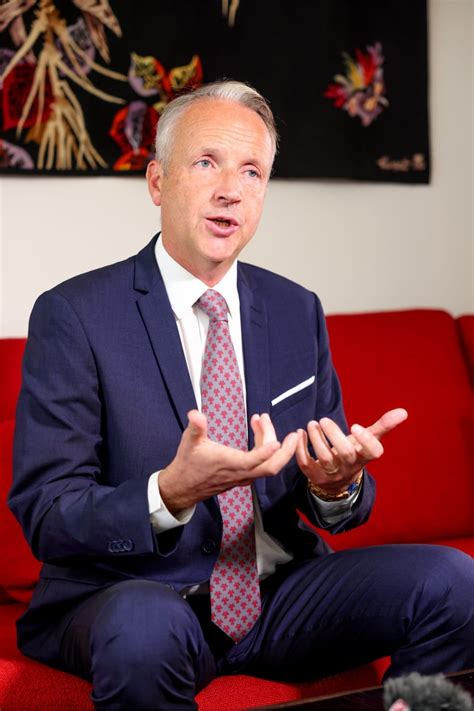
H.E. Mr. JEAN D’HAUSSONVILLE
Appointed in the Council of Ministers in Chambord by President Nicolas Sarkozy in November 2009, Jean d’Haussonville, reappointed in his functions by President François Hollande in December 2014, was confirmed by President Emmanuel Macron for a third and final legal term in November 2019. Responsible for Chambord for more than thirteen years, he became a specialist in heritage and tourism and devoted a significant part of his mandate to engaging the Chambord estate in the ecological transition, both in terms of agriculture and forestry as well as from a biodiversity point of view.
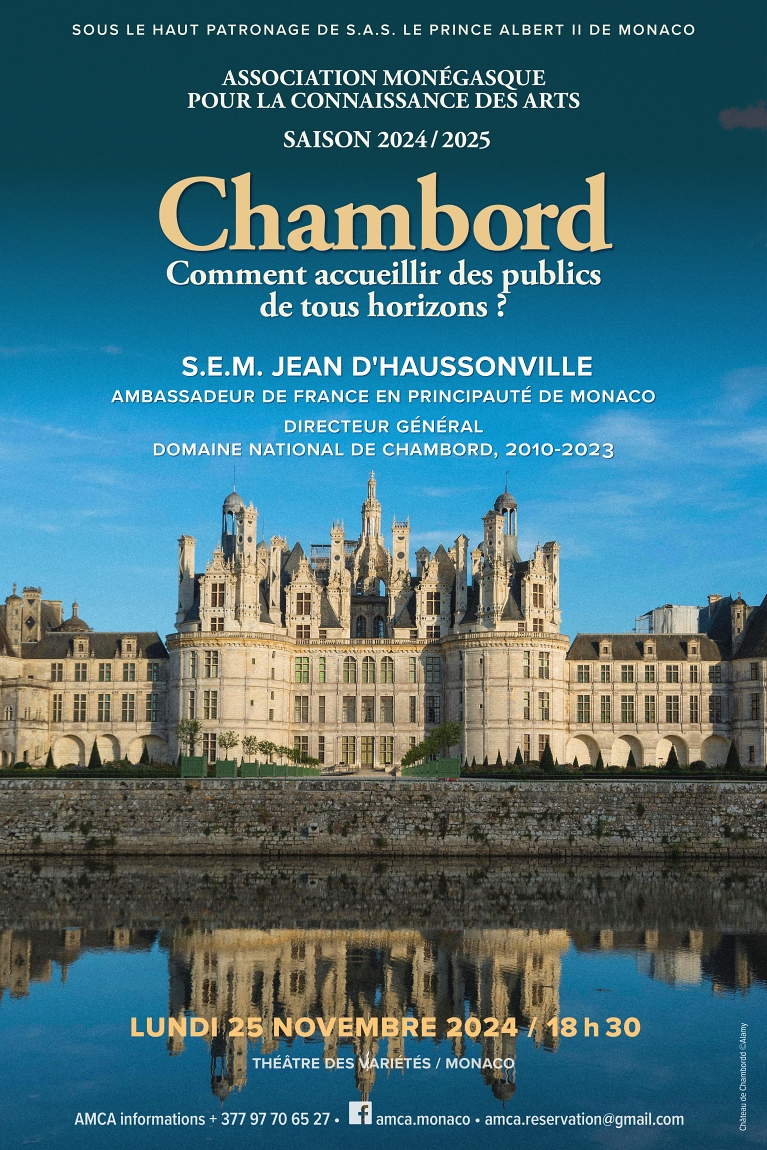
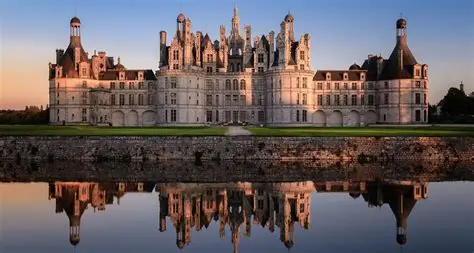
MONDAY DECEMBER 16, 2024 at 6:30 p.m.
PRINCESSE GRACE THEATER
“The Philadelphia Pictorial Collections: The Triumph of Modernity”
SERGE LEGAT
Art historian, professor at the Institute of Advanced Studies in the Arts
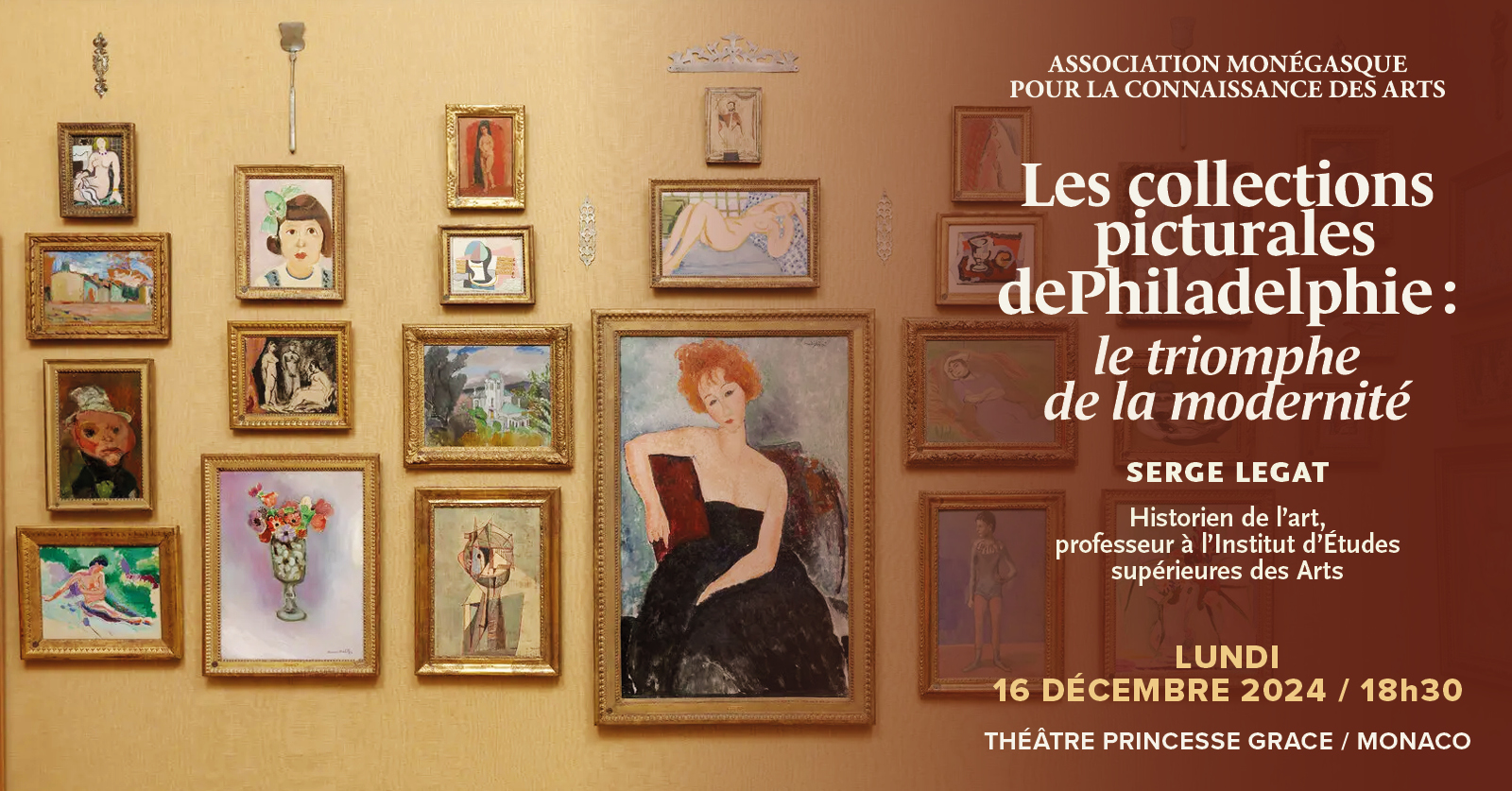
The city of Philadelphia can boast of being the birthplace of Princess Grace of Monaco. It is also a cultural hotspot, thanks to its remarkable Museum of Fine Arts (Philadelphia Museum of Art) and the exceptional Barnes Foundation (The Barnes Foundation).
Founded in 1877, the Museum of Fine Arts has an important collection ranging from ancient art to the Impressionists and ending with Marcel Duchamp (Arensberg Donation). The main building, a masterpiece of the "Greek Revival" was built from 1919 to 1928. Since 2006, it has benefited from a redevelopment by Frank Gehry. Recognizing the great quality of its architecture, the latter decided not to intervene on the work of his predecessors. Magnificent tribute!
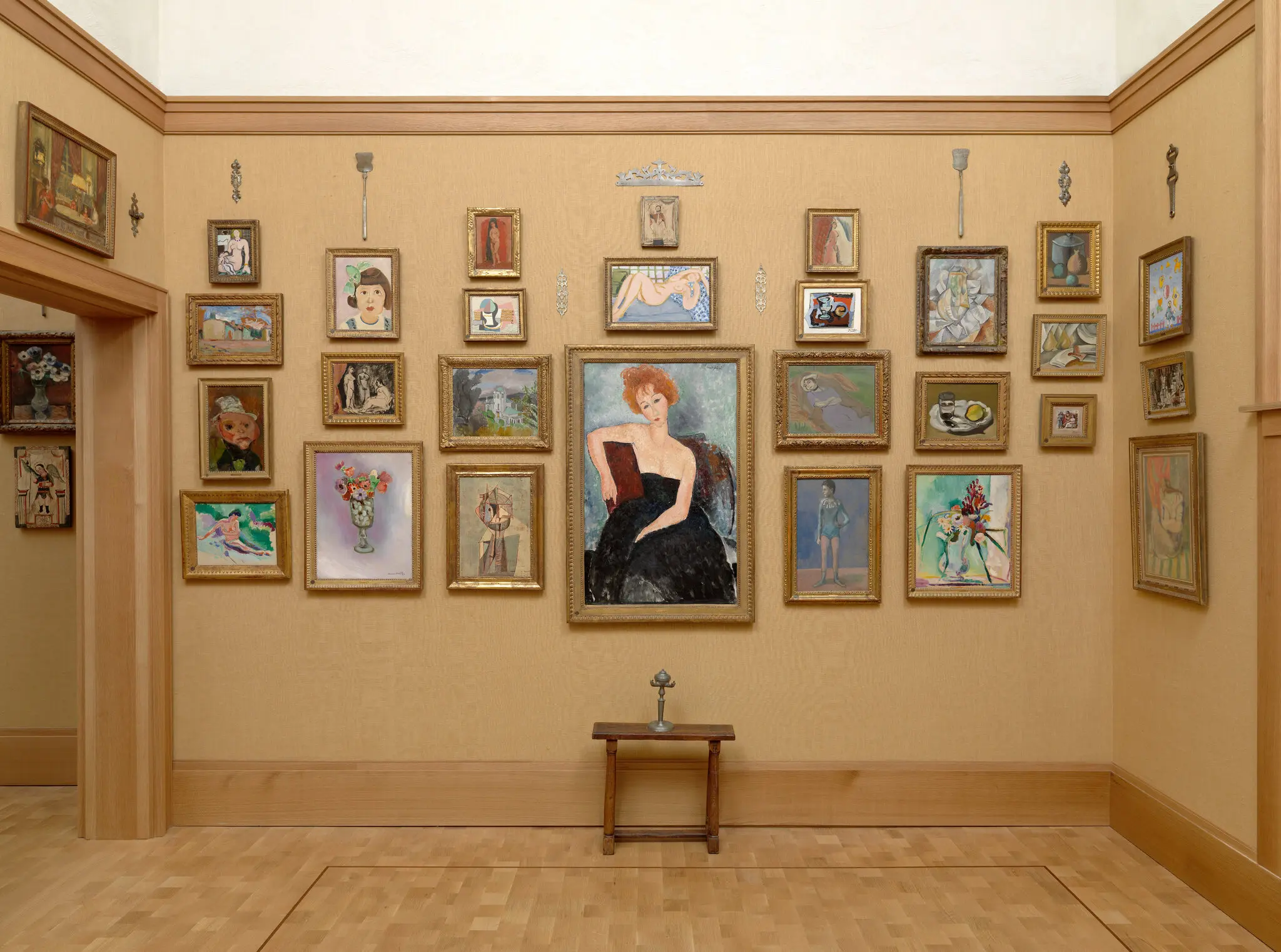
What can be said about the Barnes Foundation created by Albert C. Barnes, an entrepreneur who made his fortune in pharmaceutical products, except that it presents one of the most extraordinary collections of late 19th and early 20th century art! He was a remarkable lover of European painting, including a dazzling collection of Impressionist and Post-Impressionist canvases. The richest private collection in the world has 181 Renoirs, 69 Cézannes but also 59 Matisses, 46 Picassos and 17 Modiglianis. These figures make your head spin, but the history of the collection and its adventures are like a novel and constitute one of the great adventures of modern art.

Serge Legat
Art historian, lecturer at national museums, Serge Legat was in charge of Directed Works at the École du Louvre, taught and organized the conferences of the Jeudis de Drouot and the Club de l'Art. He is a professor of art history at the Institute of Advanced Studies in the Arts (IESA) and teaches at the School of Architecture of Paris-Val-de-Marne.

MONDAY, JANUARY 6, 2025 at 6:30 p.m.
THÉÂTRE DES VARIÉTÉS
“Edo-Tokyo, a journey back in time”
MARIE-CLAUDE MELLIES Historian

The Edo or Tokugawa period (1603–1868) is a subdivision of modern Japanese history, beginning with the accession of Tokugawa leyasu to the title of shogun and ending with the restoration of imperial power.
At the Edo-Tokyo Museum, reproductions of the districts of Edo (the old name of Tokyo until 1868) in scale models or life-size allow visitors to navigate the world of the Tokugawa who ruled Japan from the 17th to the 19th century. During this period, Japan experienced long years of internal peace in a country that had closed itself off. Isolationism brought a flourishing culture to the country, kabuki theater, haiku poetry, paintings and prints of the floating world (ukiyo-e...). The museum also takes us into a Japanese society that has found its most perfect answers through its art objects and aesthetic taste: clothing, mirrors, boxes of all kinds, pots and vases, wood sculptures, associated with painting or lacquer, the tea ceremony and martial arts.
Japan will finally open up to the West in 1854 when the American "black ships" arrive to demand the reopening of the country to trade.
The conference will offer an overview of this Japan of yesteryear.
✽✽✽
MARIE-CLAUDE MELLIES
Marie-Claude Mellies obtained a master's degree in history teaching by presenting "The symbolism of fire in Greek and Roman rituals." Since then, Marie-Claude Mellies has continued her research in comparison by focusing on different civilizations (Mesopotamia, Egypt, Greece and Rome). Since 1991, she has been giving lectures at the UNIA in Nice and accompanying cultural trips to the sites. In recent years, she has become particularly interested in Japanese civilisation.

NOTE FOR MARCH 2025
As part of the Monaco and the Mediterranean International Meetings
In partnership with the Audiovisual Institute of Monaco
TUESDAY, MARCH 4, 2025 at 7:00 p.m.
THÉÂTRE DES VARIÉTÉS
“Dans les Champs de bataille”
A film by Danielle Arbid France, Lebanon – 2003, 90 minutes
In the presence of the director
Born in Beirut, Danielle Arbid arrived in France in 1987 to study literature at the Sorbonne Nouvelle and journalism at the CFPJ. After a few notable documentaries and essays, her first feature film, “Dans les champs de bataille” (2004), draws on the memories of her adolescence, experienced during the interminable Lebanese civil war. This autobiographical dimension should not, however, be taken literally. The film's aim is less to bear witness to a personal story than to revive impressions, sensations, emotions, moral questions, those of a young girl left to her own devices in a family plagued by incessant conflicts. To the point that the armed war, the one from outside, which punctuates their daily lives, ultimately appears less spectacular than the domestic ones that agitate this little Lebanese bourgeoisie.
Jacques Kermabon.
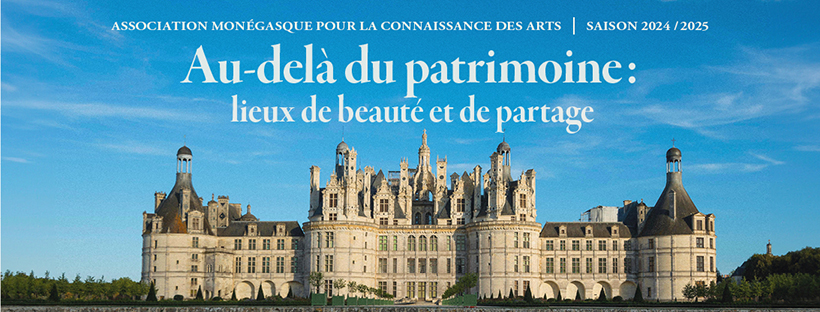
Placed under the High Patronage of HSH Prince Albert II of Monaco, the Monegasque Association for the Knowledge of the Arts was founded in 1986 by Elisabeth Bréaud, an art historian. Its aim is to gain knowledge and promote ancient, modern and contemporary arts. It organizes conference cycles and international colloquiums. The conferences take place from October to January at the Théâtre des Variétés de Monaco 1, boulevard Albert Ier and at the Théâtre Princesse Grace 12, av. from Ostend 98000 Monaco.
ROYAL ARTS VISIONS; “Beyond heritage: places of beauty and sharing”